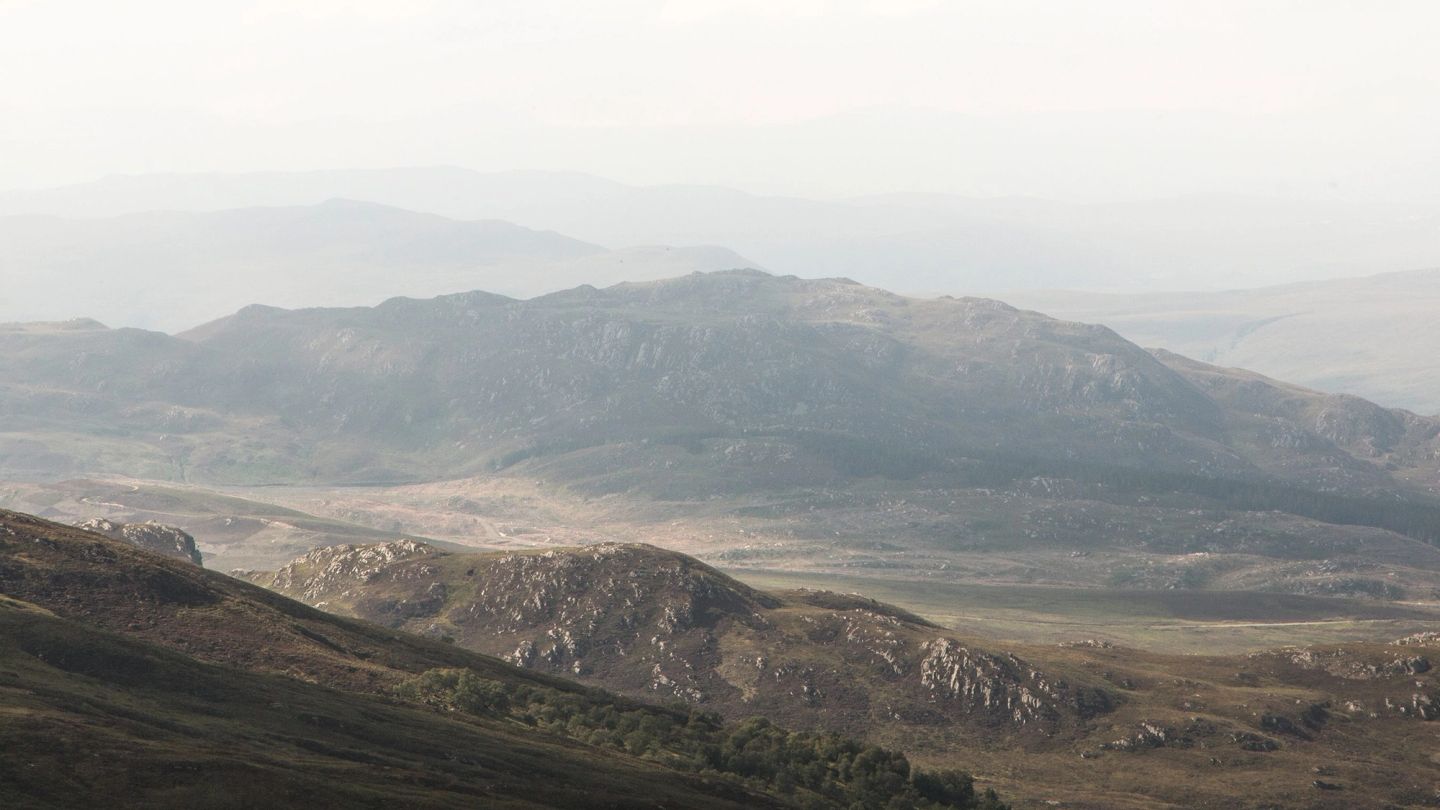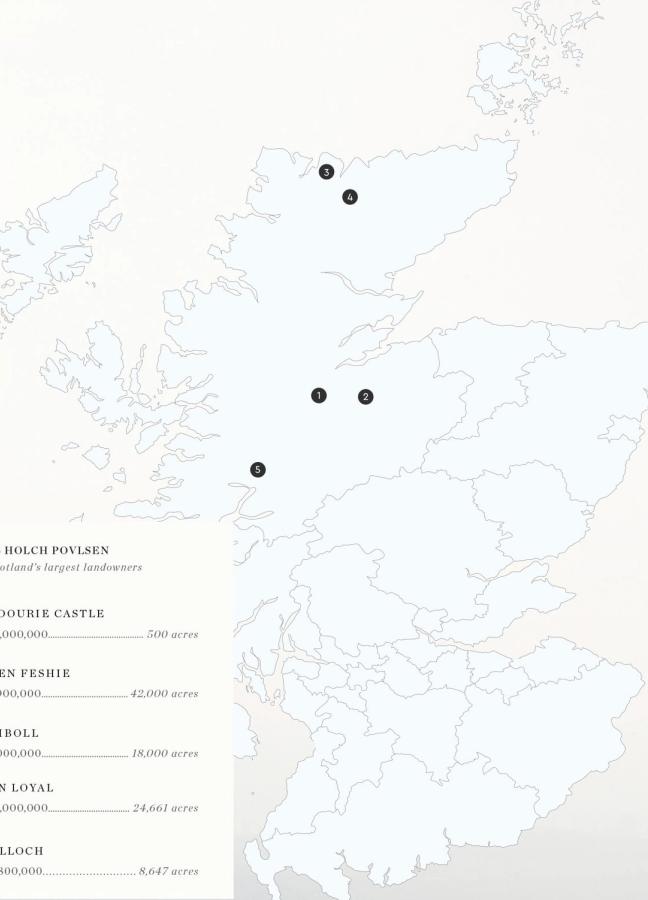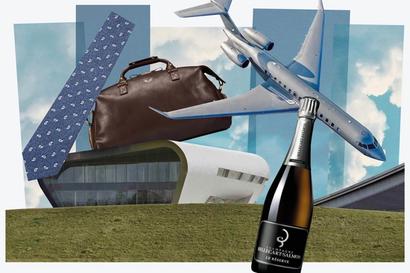

Here’s why everyone wants a piece of the Scottish Highlands
Gentleman's Journal investigates the new Kings of Scotland: Global investors bent on breathing new life into these ancient hills
- Words: Walter Wikeley
- Photography: Patrick Tillard
Wild Scotland, that majestic preserve of the tweed-clad aristocracy for centuries, with its rugged moors, foggy lochs and dodgy signal, has undergone a seismic shift in land ownership over the past 20 years. The land of the Highland Kings is experiencing a changing of the guard.
The numbers speak for themselves. Hinged on a feudal system that has shown few signs of rusting since the Scottish Reformation, more than half of Scotland is now owned by just 500 people. “This is the most concentrated pattern of land ownership in the developed world”, says academic Dr James Hunter — 144 estates larger than 10,000 acres apiece divide the country, many of them under earls, dukes, trusts and the descendants of ancient Scottish clans. But it’s the few at the very top of the pile — the handful of secretive figures who own more than a million acres between them — that now hold sway over these ancient Highlands.
Outside the laird nexus, it’s traditionally been near impossible to define precisely who owns what and where. Pinning down land ownership in Scotland can be surprisingly tricky — its main land register, introduced in 1981, is in a famously chaotic and opaque state. It’s a deeply controversial issue, and one that has fuelled an on-going national debate laced with questions of class, money and cultural politics. The Scottish Government has set a deadline of 2024 to draw up a definitive map, but it is a mammoth task, and one fraught with difficulties, grey areas and opposition.
Things have been made no simpler, of course, by the changing profile of Scotland’s biggest landowners. Keeping sporting estatesafloat and castle turrets from tumbling down is a pricey game, and as the old aristocracy haemorrhage family money with relentless upkeep, an international elite have sniffed an opportunity to foot the bill.
“This is the most concentrated pattern of land ownership in the developed world...”
Over the past two years, through a series of smoke-and-mirrors acquisitions, several savvy overseas buyers have pounced on the weak post-Brexit pound to get their slice of Highland pie. According to Anna Henderson of Galbraith — Scotland’s leading property manager — of the 16 pre-eminent estate sales in 2017, 53 per cent went to overseas buyers, a big jump on the 40 per cent in 2016. Europeans are the dominant force here — largely, Henderson believes, due to the strength of the euro, but also thanks to the fact that Scotland is “relatively close to home” (read: an hour tops in the private jet).
It seems an estate in Scotland, the sort with reliable plumbing and Ralph Lauren tartan, is the icing on a tycoon’s property portfolio: the yacht, the chalet, the eight bed Notting Hill pied-à-terre — and now the Scottish pile that stretches as far as the eye can see.

But why Scotland? Privacy seems to be the main pull, with the Highlands’ sense of untouched isolation among ethereal beauty. Then there’s the fruit of the land — more country sports than you can shake a beater’s stick at; the remarkable axis of shooting, stalking and fishing that only this part of the world can sustain. There’s also the sense of a subtle investment in class.
A Scottish estate is the most tasteful form of flash: a flash of Range Rover on a grouse moor, a flash of a wine cellar beneath a 17th-century rug, a flash of framed acreage on a loo wall. More alluring than this, though, is the sense of untapped potential and unspoiled wonder.,
That certainly seems to be the case for Anders Holch Povlsen. A Danish retail magnate with a fortune estimated by Forbes at nearly £6 billion, Povlsen is the owner of Bestseller, one of Europe’s largest fashion empires. Through a series of stealthy acquisitions since 2006, this great Dane has become Scotland’s second biggest landowner, nipping at the Ghillie Brogue-heels of the all-powerful Buccleuch family (Povlsen is said to now own more than 218,000 acres, a mere 2,000 short of the Duke of Buccleuch’s leading haul).
The newcomer has form in the precocity stakes: Povlsen took over his parent’s company of 11 major brand names — including Jack & Jones, Only and Vero Moda — at the tender age of 28. He is also the largest shareholder of ASOS and has a large stake in its continental equivalent, Zalando.
It’s been a conquest like no other. In 2016 alone, the discreet billionaire acquired the 18,000-acre Eriboll estate in Sutherland for an estimated £7 million, the 6,234-acre Polla estate near Durness for an estimated £2 million, and the 21,000-acre Strathmore estate near Altnaharra, Sutherland, for a reported £6.45 million.
This followed a decade of acquisitions across the Highlands spanning more than 100,000 acres in all, from the 20,000-acre Gaick estates in the Cairgorms (procured from fellow fashion heir, Xavier Louis Vuitton, for an estimated £2.17 million) to the the 17th-century Aldourie Castle on the shores of Loch Ness, snapped up for close to £15 million in 2015. And all this under the aegis of Wildland Limited, Povlsen’s conservation and property company set up in 2012 and now estimated to be worth over £100 million. Today, the retail magnate is said to own what amounts to 1 per cent of Scotland’s landmass.
"It’s been a conquest like no other..."
There is a distinct lack of poolside margaritas and Hello! front covers in Povlsen’s billionaire lifestyle. The tycoon’s modus operandi is discretion, alongside a typically Danish stress on the collective over the individual. Amassing his vast property portfolio was a stealthy operation, conducted well under the radar. A rare comment to the press amounted to little more than a poetic affinity with the Highlands: “My family and I are very fond of Scotland. It is a lovely place with wonderful nature and nice people. We had the possibility to buy some land — and we are very happy about that.” Povlsen has taken the concept of conservation to new levels, resurrecting 1,200 acres of the Caledonian pine forests that once enveloped Scotland as part of a 200 year ‘rewilding’ plan.
The Scandi theme continues with Danish Lego heir Kjeld Kirk Kristiansen. (One compelling reason for the overwhelming Viking presence could be the sheer acreage available to buy in this part of the world that they would never be permitted to buy in their own countries. Danish property laws, for example, prevent people buying land unless they have lived or worked on it for at least five years, or if they are able to prove it is their permanent residence all year round.)
Former president and CEO of Lego Group, Kristiansen is the richest Dane in the world with an estimated net worth of $23.6 billion. The grandson of the Lego inventor will have accrued more than 80,000 acres of prime countryside in the Scottish Highlands following his recent splurge on Ledgowan Estate in Wester Ross, finalised by Kirkbi Estates, the family holding and investment company. This 11,000 acre pad with its own loch, deer forest and renewable energy income is the Dane’s third Highland estate and will make him the 13th largest landowner in the country.
Then there are Swedish sisters Sigrid and Lisbet Rausing, who own close to 90,000 acres of the Highlands. The pair are descended from Ruben Rausing, who developed the Tetra Pak (the heat-sealed laminated cardboard carton found in every fridge from here to kingdom come). A noted philanthropist, Sigrid Rausing owns the publishing house Granta (along with its literary magazine of the same name). Her eco-queen reputation can be observed in a crusade to attract golden eagles back to her Coignafearn estate in the Monadhliath mountains.
Rausing is also up in arms over a wind-farm project on a neighbouring property. She argued that the £100 million, 33-turbine project of Dunmaglass estate, owned by Bahamas-based millionaire Sir Jack Hayward, would spoil one of Britain’s wildest landscapes, potentially harming golden eagles. Coignafearn aims to incorporate a “traditional model of a sporting estate within a conservation model” to prove it is possible to “transcend the hostility between the two ways of viewing land ownership”. Flexing her publishing muscle, Rausing wrote a land management philosophy at Coignafearn which aims to maintain a sporting estate on ecological lines.
Her sister, Lisbet, meanwhile bought her own chunk of Scotland, the Courrour estate, from the Stirling Maxwell family in 1995 and took a starkly modern approach. The estate extends to over 60,000-acres, and centres around a modernist home built of granite, steel and glass at a cost of some £20 million, according to The Times. Set on the site of its Victorian predecessor, destroyed by fire in 1942, on the banks of Loch Ossian, the home is a rare example of cutting-edge architecture in the hinterlands of wild Scotland.
"The grandson of the Lego inventor accrued more than 80,000 acres of prime countryside in the Scottish Highlands..."
Conservation is an undeniable force for good in the Highlands; but an unshakeable and unsightly fog nevertheless clings to these vast new kingdoms. The Scottish Land Reform Review Group (LRRG) was set up by the Scottish Government in 2012 to “enable more people in rural and urban Scotland to have a stake in the ownership, governance, management and use of land, which will lead to a greater diversity of land ownership, and ownership types, in Scotland”.
The group’s founding was a tacit statement that such concentrated power and wealth was damaging the rural economy and tearing at the fabric of modern Scotland. But the body soon fell into disrepair, and its landmark report was dubbed by one former MP as “the most useless 52 pages ever committed to print”. Dr James Hunter, who worked for the LRRG, later told The Observer that “Scotland continues to be stuck with the most concentrated, most inequitable, most unreformed system in the entire developed world”. And the new overseas owners, with their deep pockets, ambitions and, most importantly, discretion, are doing little to ease the underlying tensions.
One controversial figure in this respect is Dubai’s ruler, Sheikh Mohammed Bin Rashid Al Maktoum. Another of the world’s richest individuals, Al Maktoum drew his own lines in the Scottish soil over 20 years ago, and his land has crept ever outwards in the decades since. Worlds away from his desert kingdom in the Middle East, the billionaire Sheikh’s Killilan and Inverinate Estate in the north-west Highlands stretches over 63,000-acres, and is registered under Dubai’s Guernsey-based firm Smech Properties Ltd.
The Sheikh has stirred up controversy in the Highlands by applying to build four helipads for transporting business and private guests, alongside a new 16-bedroom lodge, which locals claim is a blot on the landscape. The new annexe has been constructed as a holiday home for the Sheikh’s family to escape the Dubai summer heat. The Sheikh is known for his equestrian affinities and for his passion for poetry; the Maktoum family pull in a poetic one billion a year in oil revenues.
Perhaps it’s unsurprising, then, that Donald Trump has muscled in on the Highland game. After gobbling up the Menie estate in Aberdeenshire to build his own luxury golf course, Trump took the Scottish government to court in 2014 over a decision to approve a large experimental wind farm off the coast of his land. He lost, much to the delight of the local residents. Trump’s controversial tenure in Scotland seems to testify to the case against these new Highland kings. A better example is that set by retired Australian hedge fund manager Greg Coffey. Dubbed the ‘Wizard of Oz’, Coffey chose the 12,000-acre Ardfin estate on the island of Jura as the site for a new world-class 18-hole golf course. Andy McCallum, who runs the nearby Jura Hotel, assured the Sunday Herald that “no other person would have invested what Greg Coffey is investing in this island”.
That is the argument put forth again and again in this changing of the guard: that no-one else would — or could — invest the money to keep these places ticking over. It may be tough for traditionalists to swallow, but more will follow behind these new barons, whether they like it or not, among the unique atmosphere of cheap pounds and a growing global glitterati. The new breed of international Scottish lairds undoubtedly has the unique financial muscle to repair, re-wild, and rebuild the Highland piles left to them by an ailing Tudor aristocracy. The kings are dead. Long live the kings.
This article was taken from the Mar/Apr edition of Gentleman’s Journal. Subscribe now…


